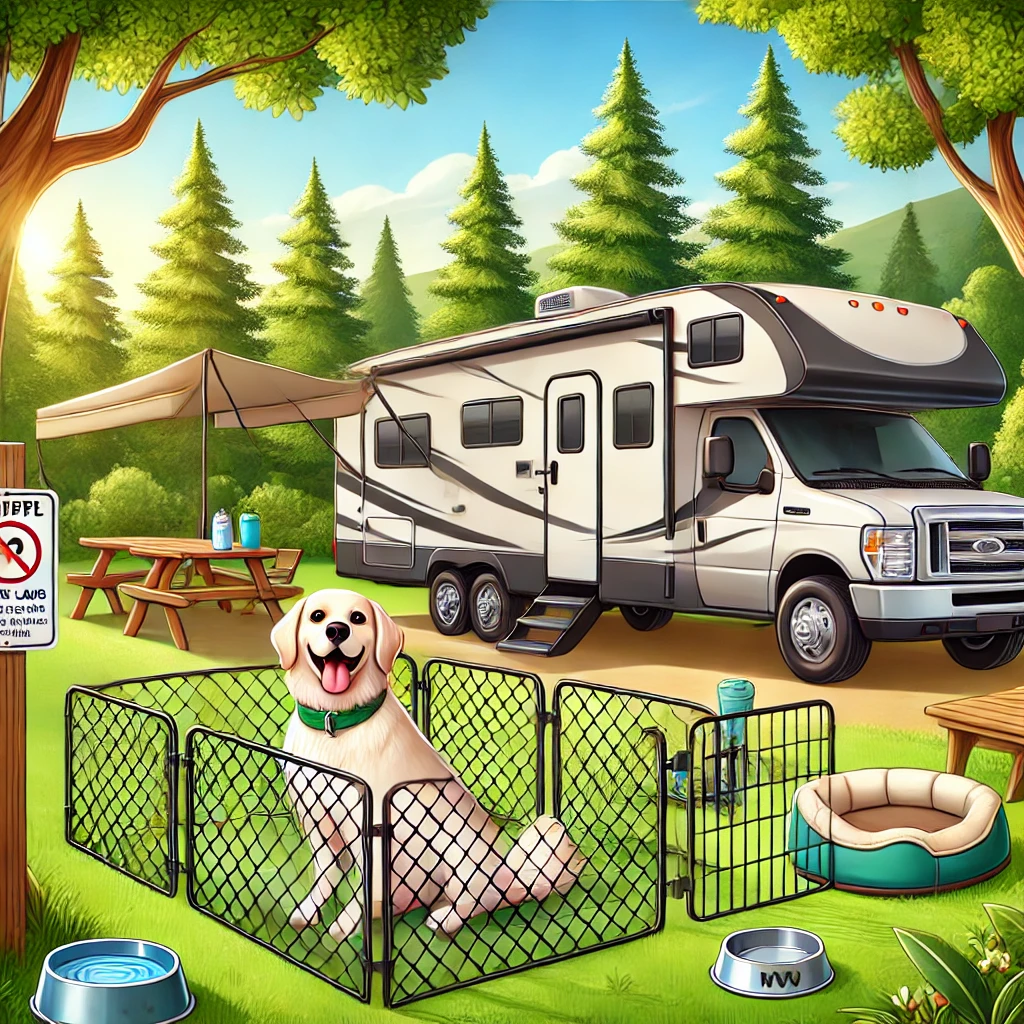
Essential Tips for RVing with Dogs: Ensure a Safe Campsite
RVing with your furry friend can be a thrilling adventure, filled with beautiful landscapes and quality time spent together. However, ensuring your campsite is safe for your dog is crucial for an enjoyable trip. From hidden hazards to environmental factors, understanding potential risks will help keep your canine companion safe and happy on the road. Here, we provide essential tips for RVing with dogs, allowing you to minimize danger and maximize fun.
Understanding Common Campsite Hazards
Every campsite comes with its unique set of challenges, particularly when traveling with dogs. As a responsible RV owner and pet parent, being aware of these hazards can help prevent accidents and injuries. Here are some common dangers you can encounter:
- Wildlife Encounters: Whether it’s bears, snakes, or venomous insects, wildlife can pose a threat to your dog’s safety.
- Sharp Objects: Glass shards, rusty metal, or sharp tools can be scattered around campsites, leading to cuts and injuries.
- Toxic Plants: Certain plants can be poisonous if ingested. Familiarize yourself with common poisonous plants in the area.
- Water Hazards: Ponds, lakes, and rivers can be dangerous, especially in swift currents or stagnant water that might harbor bacteria.
- Leash Laws and Regulations: Some campgrounds may require dogs to be leashed at all times, while others may have designated off-leash areas.
Pre-Travel Checklist
Before you hit the road with your furry friend, having a comprehensive pre-travel checklist ensures that you won’t overlook critical aspects of campsite safety. Here are some items to consider:
- Health Records: Keep a copy of your dog’s vaccination records and health history in case of emergencies.
- Leash and Collar: Ensure that your dog wears a secure collar with an ID tag containing updated contact information.
- First Aid Kit: Prepare a pet-specific first aid kit that includes bandages, antiseptic wipes, tweezers, and anything else your dog might need in case of an injury.
- Dog Medications: Don’t forget any prescribed medications your dog takes, and a few extras in case you extend your trip.
- Food and Water Supply: Stock up on your dog’s favorite food and carry enough fresh water to keep them hydrated.
Assessing Your Campsite Upon Arrival
Once you arrive at your chosen campsite, taking a few moments to assess the area for potential hazards can make all the difference for your dog’s safety:
Scouting the Area
- Examine the surroundings for wildlife. Look for animal tracks, droppings, and any signs indicating the presence of wild animals.
- Identify any sharp or hazardous debris that could cause injury. If necessary, clear the area or choose another spot.
- Take note of nearby water bodies. If the campsite is near a lake or river, determine if it’s safe for your dog to swim.
Creating a Safe Zone
Establishing a designated safe zone for your dog at the campsite can help them stay secure and comfortable:
- Shade and Shelter: Set up your dog’s bed or crate in a shaded area to protect them from the sun’s harsh rays.
- Secure Boundary: Use a portable dog fence or tie-out cable to create a safe perimeter while allowing them to roam a bit.
- Keep Essentials Nearby: Have your dog’s food, water, and toys within arm’s reach to keep them occupied while you set up camp.
During Your Stay: Safety Practices
While enjoying your time at the campsite, there are several practices you can adopt to ensure your dog’s continual safety:
Leash Management
Always adhere to leash laws and regulations specific to the campground. Here’s why:
- Keeping your dog on a leash prevents them from wandering into dangerous areas, such as roadways or unmarked regions.
- A leash allows you to exert control over your dog’s behavior, reducing the likelihood of negative encounters with wildlife or other campers.
Monitoring Your Dog’s Behavior
Keep a close eye on your dog’s behavior to spot any signs of distress or discomfort. Look for indicators such as:
- Excessive barking or agitation could suggest danger or anxiety.
- Signs of illness, including vomiting, excessive thirst, or lethargy, may indicate a larger issue.
- Changes in appetite or sleep patterns could indicate discomfort or stress caused by the environment.
Post-Camping Considerations
When your camping trip comes to an end, don’t neglect the final thoughts on your dog’s safety:
Clean Up and Check Out
- Ensure your camping area is clean. Leaving behind food scraps can attract wildlife and create potential hazards for other pets and visitors.
- As you pack up, check your RV and campsite for any items that may have gone missing, like leashes or dog toys.
- Take a moment to ensure your dog has fully adjusted to the return home, as they may experience stress after a change of scenery.
Conclusion
RVing with dogs can be an unforgettable experience, so long as you prioritize their safety. By understanding common campsite hazards, preparing thoroughly before your trip, and assessing the campsite upon arrival, you lay the groundwork for a successful adventure. With attention to detail and proper care, you and your dog can create beautiful memories while exploring the great outdoors together. Happy travels!
“`


